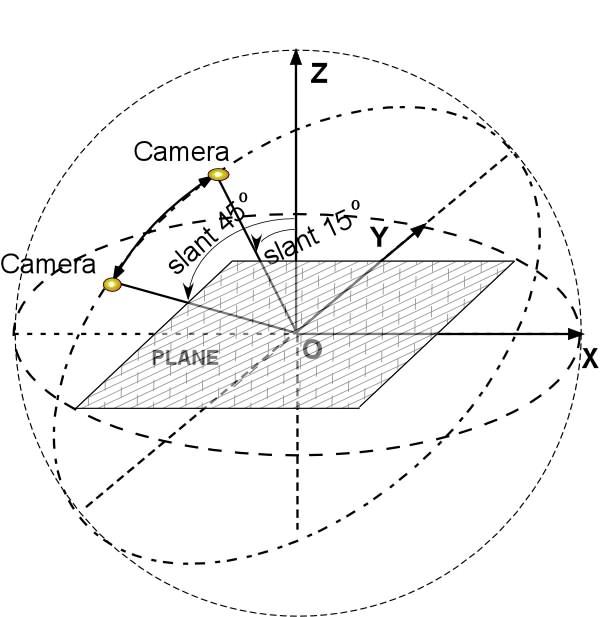
Segmentation of a Plane due to Erroneous Slant Estimation
If your navigator doesn't support the online video, click here to save it for local viewing .
In the video the camera images a plane which has two textures, one in the upper half, the other in the lower half. The plane is located at the center of a sphere and the camera orbits the sphere along a great circle as shown in Figure 1 below.
As the camera moves along the great circle you perceive the plane to be segmented into two differently slanted planes with the slant in the upper texture much smaller than in the lower one. (That is the upper one appears to be closer in orientation to the image plane.) This is predicted by the bias, because the texture in the upper part of the plane causes much more bias than the one in the lower part giving rise to a large underestimation of slant.

Figure 1: The camera orbits the sphere along a great circle, that is it translates and rotates such that it keeps fixating at the center of the plane. At the beginning of the motion the slant of the plane with respect to the cameras is 15�, at the end of the motion the slant is 45�.